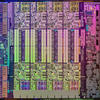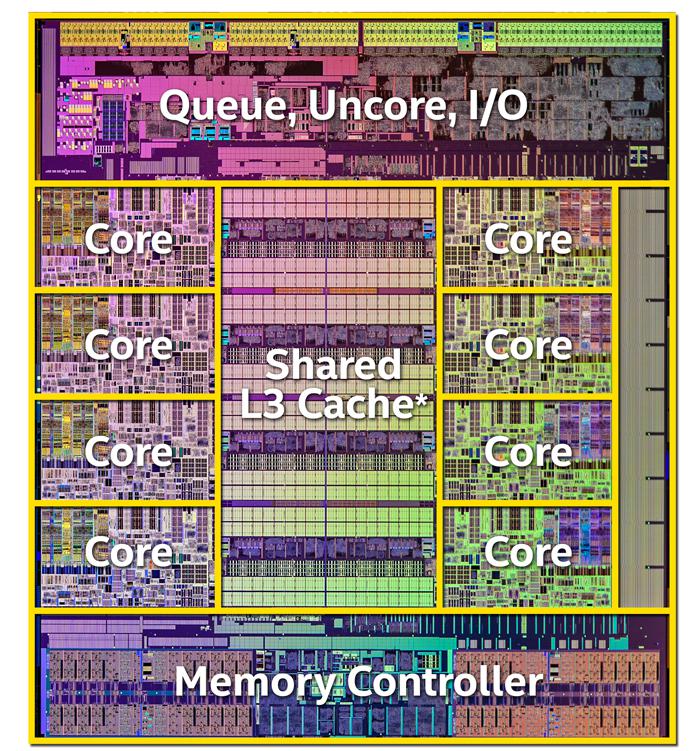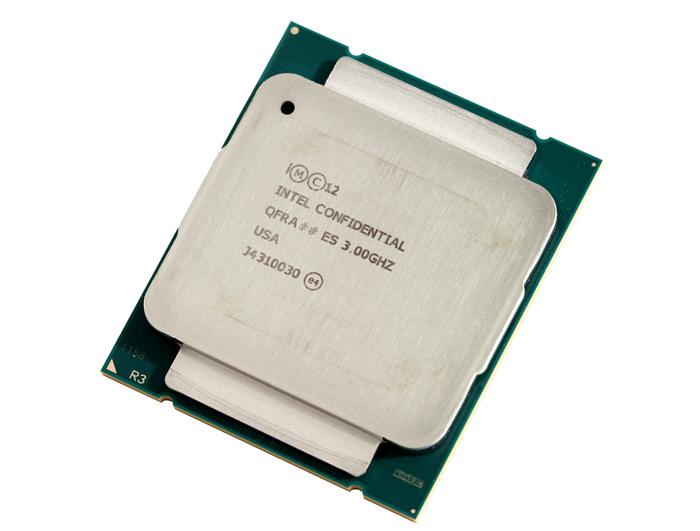Meet Haswell-E
Haswell-E
Haswell-E, it's the all updated 22nm Hi-K metal gate core technology "enhanced" slash "enthusiast" version of what pretty much is similar to the Ivy Bridge-E architecture, you'll see few new features added and even some others stripped away. Simply put, you take all the good ingredients from Ivy Bridge-E and place it on a smaller die. Compared to the regular mainstream Sandy Bridge / Ivy Bridge / Haswell processors add more cores, a tweak or two and add a pinch of quad-channel memory.
The Haswell-E Core i7 5960X has 2.6 Billion transistors with a die measuring 17.6 x20.2mm (356 mm2)
The three processors released today are the 5960X, 5930K and 5820K, the latter two Haswell-E CPUs will get six cores and the flagship processor of course will get eight cores and thus sixteen threads, the latest instruction sets are embedded. So with 6 and 8 core CPUs, if you do the math fast enough, you get up to 20 MB of L3 cache.
Above, you can see the naked die of Haswell-E. In this first wave of Haswell-E processors Intel is going to release three E class SKUs, namely the Core i7-5960X, the Core i7-5930K and the Core i7-5820. Each will have different clock frequencies and a slightly changed L3 cache. The Core i7-5820K and Core i7 5930K are six core processors, the flagship product is the 5960X which is an 8-core processor. All processors will have up-to eight cores, turbo boost 2.0, Hyper-Threading, up-to 20MB of L3 smart cache, Four channels of DDR4 2133, AVX2, AES SSE 4.1 and 4.2 instruction sets etc. Below, an overview of the main specs per processor.
From a naming point of view, Intel chooses three different suffixes for the processors; we have an X model, a K model and, although not yet released, typically a "regular" model.
- The X suffix is for Intel's Extreme Edition processors, this means the top-of-the-line unlocked processors.
- The K suffix denotes a slightly lower end processor yet with its multiplier unlocked.
- And the normal editions are pretty much mainstream without any enthusiast grade overclock options, meaning a locked multiplier.
The flagship Intel Ivy Bridge-E CPU is the Core i7-5960X packed with 8 cores and 16 threads and would feature a core clock of 3.0 GHz base and 3.5 GHz Turbo boost with 20 MB of L3 cache. This Extreme Edition CPU costs a whopping $1000 and boasts a 140W TDP. Cache wise the L1 and L2 caches are 100% similar to Ivy Bridge and Haswell:
- 32KB data and a 32KB instruction L1 cache per physical core.
- 256KB L2 cache per core.
- The six core processors have 15MB of L3 cache, meaning 2.5 MB per core
- The eight core processors have 20MB of L3 cache, meaning 2.5 MB per core
Intel has increased pricing for the two 'cheaper' SKUs, the eight-core 5960X flagship SKU however retains its 999 USD pricetag. The 5930K and 5820K are $583 and $389 USD per 1000 SKU tray. All three processors will have a 140W TDP.
If you are wondering what the big difference is inbetween the 5930K and 5820K aside from a marginal clock frequency difference, the 5930K supports 40 Gen 3.0 PCI Express lanes whereas the 5820K only has support for 28 PCI Express lanes.
So if you plan multi-GPU solutions and thus graphics cards, that might make a difference. Then again, 26 PCIe Generation 3.0 links still offer way more bandwith then you probably ever need. In that scenario it means you'd have one x16 Gen 3.0 slot and then your second card at x8 Gen3. It's still a truckload of bandwith that will not really effect performance to be honest.
You have to admit - that is a pretty cool looking screenshot :)




